Guest Post: Please welcome Heidi from Barefoot and Paleo, a blog dedicated to living an eco-friendly and sustainable lifestyle. She’s an upcycling expert who rarely lets anything go to waste! Here she is with How to Reuse 13 Things You Would Normally Throw Away:
First, I want to thank Ashley for allowing me to share some ideas on how to reuse or upcycle items many people wouldn’t think to use more than once.
According to the U.S. Environmental Protection Agency, in 2012, Americans created 251 million tons of trash of which 87 million tons was composted or recycled (source). I believe there’s more we can do; if we reused one-fourth of our trash, it would make a huge impact for future generations. For those things that must be thrown away, I suggest using biodegradable trash bags, which degrade much faster than conventional plastic trash bags. This leads me to the first item on the list:
1. Plastic Bags
Let’s keep plastic bags out of landfills by reusing them in these ways:
- future shopping trips can become less wasteful by reusing plastic bags. Store them in your trunk or door cubby – just remember to grab them before entering the store!
- create packing materials from plastic bags to protect breakables when moving or layer plastic bags between valuables when storing. You can also use them to provide extra padding when mailing packages.
- keep plants alive when you leave town by placing plastic bags around the entire plant to trap moisture.
- protect wipers and mirrors by putting plastic bags over them during freezing weather.
- ditch plastic for cloth by using reusable canvas bags for your shopping.
- recycle plastic bags at any big box store by putting your used bags in the designated boxes usually near or around the entrance/exit
- donate used plastic bags (without rips or tears) to local businesses who need bags like thrift stores, libraries, or animal shelters
2. Food Scraps
In the United States, around 30 percent of food goes to waste (source). Here are a few ideas to reuse food scraps instead of tossing them in the trash:
- garlic skins or onion skins added to soups or bone broth will add extra vitamins and minerals, just be sure to remove them before serving.
- coffee grounds are rich in nitrogen, which is great for seedlings and plants (especially roses). They can be used as pest control to help keep ants and slugs away. Also, placing coffee grounds in your refrigerator or freezer will help neutralize any odors.
- egg shells are high in calcium so sprinkling them on the soil below plants will boost growth – or – grind them up into powder then add them to smoothies and shakes.
- avocado seeds are rich in fiber and antioxidants. They can be dried, cut into pieces, and ground into a fine powder then added to smoothies or shakes.
- meat bones are great for making homemade broth by saving bones from roasting or slow cooking, store in the freezer until there is enough to make broth.
- orange and lemon peels can be frozen or dried for later use. Just create twists then place in the freezer or in a spot to dry (at least 1 week). Combining citrus peels with water and vinegar makes for a nice homemade multi-purpose cleaner.
- compost is the next best thing if you don’t have the time to reuse your food scraps.
3. Old or Damaged CD’s or DVD’s
Millions of used discs end up in landfills and incinerators each year. Avoid adding to plastic waste by upcycling CD’s and DVD’s into useful items:
- upcycle to coasters and get creative by decorating old discs with fabric, paint, small decorative stones, ribbon or hemp and use them as coasters.
- make ornaments by cutting discs into small shapes and sizes. Use non-toxic glue to adhere the pieces (shiny side up) onto a glass ornament.
- keep pests away by hanging discs on tree limbs to keep birds and deer away from your garden (you can also use strips of used aluminum foil for this).
- recycle CD’s, DVD’s, and cases with a #7 as they are usually not accepted at local recycling centers. The CD Recycling Center will recycle them properly and they’ll also accept inkjet cartridges, cell phones, cables, holiday lights and other small electronics.
4. Used Tea Bags
After water, tea is second-most-consumed beverage in the world. Here are some ways to reuse tea bags:
- relieve puffy eyes by chilling the bags in the refrigerator then placing one over each eye.
- soothe insect bites and minor burns by chilling the bags in the refrigerator then placing them on bites or burns.
- take a calming bath by adding used tea bags to bath water for some free aromatherapy and skin smoothing effects.
- feed your garden with the acidic tannins of caffeinated tea and rejuvenate plants (especially roses and ferns) by breaking open used tea bags and sprinkling the contents over the soil below the plant.
- compost if you can’t find a way to reuse your tea bags to help enrich the soil.
5. Egg Cartons
Egg cartons are not recyclable in most areas so it’s important to find another use for them. Instead of sending them to the landfill try one of these ideas:
- start seedlings by adding soil to each hole then planting seeds of your choice. Once they have sprouted, you can plant the whole egg carton if it is made of wood pulp or recycled paper as it’ll biodegrade when in the ground.
- make a palette for paints by using each hole for a different color. This works well for kids!
get organized by using each hole to organize jewelry and beads or tools like nuts and bolts. Create labels or label the top of the egg carton so you know what’s in it. - use as packing materials by lining the bottom of a box with egg cartons. Add them to the top of the package before sealing – this is perfect for shipping or moving.
- donate to local farmers. They love free egg cartons because otherwise they would have to buy them.
6. Styrofoam
Americans throw away 25 billion styrofoam cups each year. 500 years from now these cups will still be sitting in a landfill. If you have styrofoam, reuse it in these ways:
- create stencils for painting by drawing your favorite shapes on the styrofoam and then cutting those shapes out.
- make packing peanuts if you have a lot of styrofoam – just cut it up into smaller pieces and use it as packing materials.
- add drainage for plants with styrofoam peanuts or by cutting up large pieces of styrofoam. Just add them to the bottom of the pot instead of rocks, fill with dirt and add a plant.
- stop using styrofoam by not purchasing food or drinks in these containers. Instead buy these for take out and these for coffee to-go.
7. Glass Jars
In America, more than 11.6 million tons of glass is trashed each year and only 28 percent is recovered for recycling. Here are a few ideas to reuse glass:
- get organized by using jars for spices and dry goods in the pantry or to help organize tools like nuts and bolts.
- drink water from used mason jars – an EcoJarz lid will turn it into a portable drinking container.
- make an outdoor windproof candle by adding a beeswax votive to a heat resistant glass jar, be sure to leave the lid off and don’t burn yourself.
- recycle if you can’t find a use for your empty glass containers.
8. Empty Paper Towel & Toilet Paper Rolls
According to the EPA, around 9, 600 tons of “used” paper towels are sent to the landfill every day (3.5 million every year). Try these ways to keep the waste to a minimum:
- use alternatives to paper towels – here are 7 ideas for paper towel alternatives.
- store holiday lights by wrapping them around empty rolls to prevent tangling.
- make waterproof lint logs by reusing toilet paper rolls and dryer lint like this.
- donate to local schools, churches, and libraries who may need empty rolls for craft projects.
9. Rubber Bands
Rubber bands contribute to landfill waste too. According to the EPA, 8.7% of land waste consists of rubber, leather, and textiles. Start saving rubber bands and reuse them in these ways:
- secure clothing on hangers with thick rubber bands. Loop a band on each side of a hanger (around the shoulder area) to keep shirts from falling onto the floor.
- create a jar opener by using a thick rubber band around the lid for a better grip
- make a spoon stopper by wrapping a rubber band around the top of a spoon handle to keep it from falling into a mixing bowl.
- keep wearing your pre-pregnancy jeans by putting a thick rubber band around the button and then through the buttonhole – pull the band as tight as you want, then loop it around the button as many times as needed.
- donate rubber bands to teachers for student projects or for other uses in the classroom. The U.S postal service also reuses rubber bands, simply drop them off at a local office.
10. Worn or Stained Clothing
Instead of tossing clothes into the trash, look at these ways to upcycle all kinds of fabric:
- cutting fabric into rags is the easiest solution – simply cut into small and large squares for indoor and outdoor cleaning rags.
- upcycle old jeans into bags, stuffed animals for kids or pets, or even cut them into small patches for other jeans.
- donate any clothing in good shape to Salvation Army, Goodwill, or consignment shops. Local shelters may also take donations.
11. Bacon Grease
If you follow a real food diet, you may already know to reuse your bacon grease for cooking, but here are some ideas:
- use it for cooking but be sure to keep it in a glass jar with screw top and place in the refrigerator so oxidation doesn’t take place – substitute bacon grease whenever a recipe calls for fat.
- feed it to feathered friends by pouring used bacon grease into a used tin can (double eco-friendly!) and attaching it to a tree. You can also spread the grease on pinecones and then roll them in birdseed.
- make a candle with a small glass jar and pour bacon grease into it. Put the jar in the refrigerator until the grease solidifies and is hard (about 2 hours), then drill a hold in the center and add a natural wick. Light it up and enjoy the smell of bacon.
12. Soap Slivers
Reusing soap slivers not only keeps waste out of landfills, it’s also frugal. All those little soap slivers can be put to good use:
- keep deer and other pests away from your garden or fruit trees by putting soap slivers into an old pair of panty hose or similar fabric, tie it up, and hang it from a tree or pole.
- make a homemade loofah by placing soap slivers inside small mesh bags then exfoliate.
- turn into soap balls by grating the soap, then add the shavings to hot water to make them malleable, shape into balls and place them in a dry place for 2 weeks until completely dry and hard.
- add to the next bar is the easiest solution, simply attach the small soap slivers to the top or bottom of a new bar of soap by using a little water.
13. Wine Corks
For the past four years, the United States has been the largest wine consuming nation according to The Wine Institute. Keep eco-friendly cork out of landfills with these ideas:
- mark your plants by using old corks as waterproof plant markers. Take a kebab stick or used chopstick and poke it into the bottom of the cork, write the name of the plant on the side of the cork, then stick it in the ground next to the plant.
- create a stamp by carving a design into the top of the cork then pressing it onto an ink pad.
- keep plants moist by placing corks into a blender and blend until small chucks form. Spread them on your landscaping, they will help retain water. Be sure not to use plastic or rubber corks.
- use for safe sewing by storing sewing needles in corks, push each needle into the top or bottom of the cork.
- donate corks if you don’t have time to reuse them. Many health food markets have a recycling program in place, just look for a designated box near the wine department or near the entrance/exit.
Heidi Fiscus is an entrepreneur, primal enthusiast, real foodie, wife, and proud mama. In her spare time she enjoys being outside barefoot, experimenting in the kitchen, learning new things, and traveling to new places.
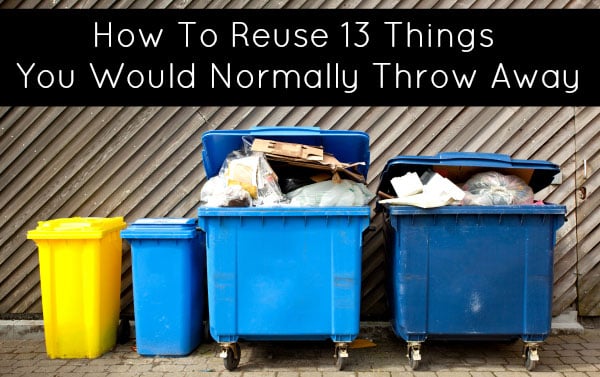
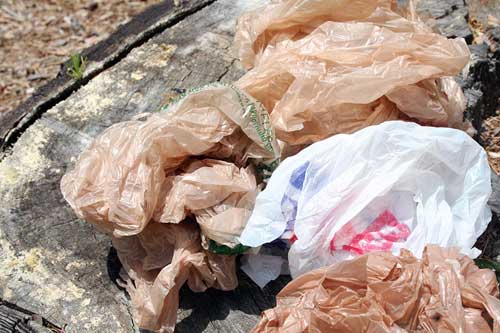
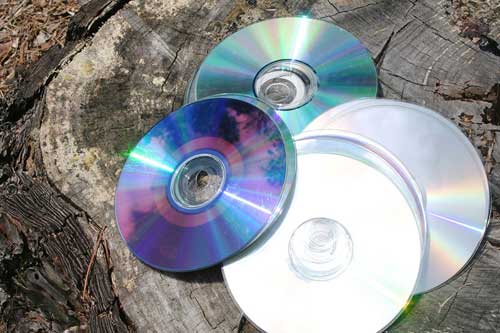
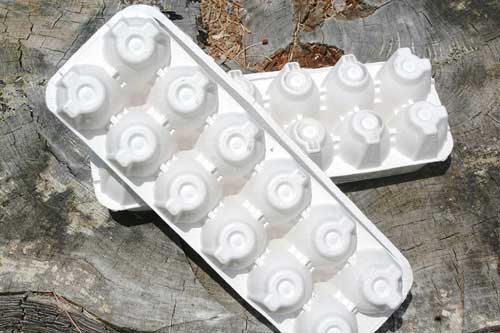
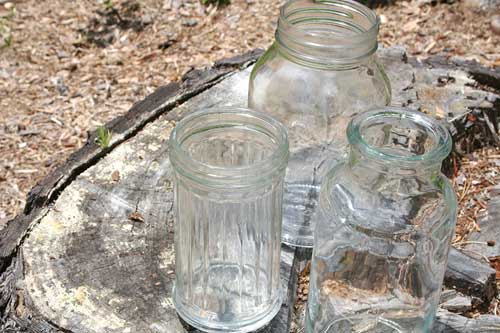
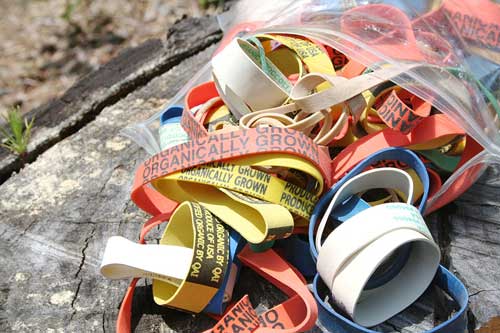







Private Proxies says
I do love the manner in which you have framed this concern and it really does provide me some fodder for thought. Nonetheless, from what precisely I have witnessed, I basically wish when the remarks pile on that men and women continue to be on issue and don’t start upon a soap box associated with the news du jour. All the same, thank you for this outstanding point and although I do not necessarily go along with this in totality, I respect the point of view.
Suzanne Curtin says
Regarding those wine corks…lots of crafters want them!
foxhq says
Don’t have any furniture glides on hand when you need to move a piece of heavy furniture by yourself ? Dig into your painting supplies and use the base of a FrogTape container under each leg on the furniture piece. It’ll then slide smoothly across the floor.
Saw Zayer Oo says
Beautiful ways to save our environment!
Elizabeth Kane says
Thank you for the ideas!
Me and my family have used these ways alot
My Heart Beets says
That’s so great to hear! 🙂
Paula Evans says
I really like these ideas! For me it is a lot of fun to think of ways to reuse old materials. The results are always really interesting! Thank you for all these ideas.
Maureen says
My favorite recycling tip: I keep a rabbit as a pet. Fits in with busy lifestyles- they’re perfectly happy with twice a day attention. He eats my food scraps, prunings and weeds from my yard, uses a litter pan with recycled newspaper litter, which goes straight on my garden and flower beds to improve them-they are now deep, dark, fluffy and full of worms for little work, and I get a cuddly and amusing pet, too.
Heidi @ Barefoot and Paleo says
Great idea!
My husband had rabbits as pets (which turned into meals) when he was growing up! We may have some eventually along with some chickens and a goat.
Rohan says
It was all going well till it turned into a meal! Didn’t he get feeling attached to the ball of fluff??